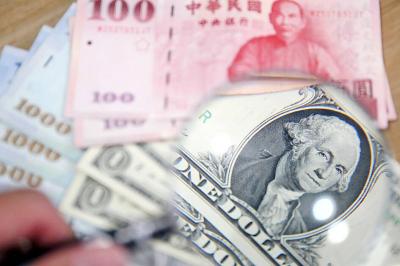The nation’s telecoms are not aligning with the government’s eagerness to put Taiwan on the world’s 5G map as they balk at splurging on the expensive wireless technology that has no guarantees for quick returns.
The nation’s five wireless carriers have clearly said that they would not scramble to roll out 5G services, as they face big challenges ahead, including the absence of a profitable business model to sell the revolutionary technology, in spite of all the use cases that have been suggested.
A 5G use case and adoption survey released last week by Gartner Inc found that Internet of Things applications remain the most popular target use case for 5G, followed by video.
About two-thirds of organizations intend to deploy 5G by 2020, it said.
“We know enterprise clients will be early adopters of 5G technology. We also know the benefits of the technology, but people rarely talk about what will be the potential business models,” Chunghwa Telecom Co (中華電信) president Sheih Chi-mau (謝繼茂) said at a Taiwan Communications Society forum on Dec. 14.
“How to make profits from 5G technology is a real challenge for us,” Sheih said. “Whether 5G can create a blue ocean [for telecoms] remains a question mark.”
Local telecoms each burned up to NT$60 billion (US$1.95 billion) to obtain 4G spectrum and build 4G networks. Four years after the launches in 2014, carriers are still struggling to recover those investments.
Stiff price competition has been blamed for telecoms’ plight.
Over the past two years, 4G average revenue per user has dipped 32 percent to NT$555 in the second quarter of this year, government statistics showed.
Taiwan Star Telecom Corp (台灣之星) president Cliff Lai (賴弦五) made a bold forecast, saying that “5G technology will not be a profitable business by 2025.”
“We cannot even find a business case that would allow us to recover 5G investments in the short term,” Lai said at the forum.
Deploying a 5G network remains two to three times more expensive than the rollout of 4G, as telecoms would have to install many more base stations to ensure Internet connectivity to a massive amount of end devices that is 10 to 100 times faster and has a lower latency than 4G, Taiwan Star Telecom said.
Taiwan Mobile Co (台灣大哥大) is also conservative about jumping into capital-intensive 5G technology.
Company president James Jeng (鄭俊卿) said that the firm would not invest heavily in 5G within three years after the release of the 5G spectrum.
“Within the next three years we do not see any scalable business opportunities that are strong enough to support telecoms’ heavy investments on extensive 5G coverage like we did for 2G, 3G and 4G,” Jeng said.
The National Communications Commission has pushed back the issuance of 5G licenses from next year to 2020 due to technological hurdles and expensive telecommunications equipment in the initial phase.
Local telecoms are likely to commercially launch 5G services in the second half of 2020 or in the first half of 2021, about six months after the release of spectrum, Far EasTone Telecommunications Co (遠傳電信) president Yvonne Li (李彬) said.
In other words, Taiwanese telecoms would lag their global peers such as US telecom giants AT&T Inc and Verizon Communications Inc by about two years in offering 5G services. In the US, major wireless service providers have already begun providing 5G services.
Other markets where significant 5G subscriber volume is expected include South Korea, Japan and China, Telefonaktiebolaget L.M. Ericsson said in an annual mobility report released last month.
Flawed government policy has stalled local telecoms’ investment in 5G and they also learned a harsh lesson during the migration to 4G.
WiMAX service providers, the strongest supporters of a government drive to build a local WiMAX ecosystem, were all forced out of the market in 2015 after admitting defeat in a battle for 4G supremacy with LTE technology.
On the cusp of entering the 5G era, the government aims to build a new 5G supply chain in Taiwan by teaming up with global 5G pioneers like Qualcomm Inc, with the ultimate goal of transforming the nation into a “digital economy.”
The Ministry of Economic Affairs has created a 5G Technology Program Office tasked with spurring collaboration to lead local chipmakers, base station suppliers and networking equipment manufacturers into the global 5G market.
The domestic market could serve as a testing ground for the local 5G supply chain if telecoms spearhead the rollout of 5G services, the ministry said.
However, telecoms have not shown interest in the proposition.
“The ministry has built a bad reputation,” Lai said, citing the WiMAX fiasco. “Taiwan should seek to be a smart follower, rather than a 5G leader.”

The US dollar was trading at NT$29.7 at 10am today on the Taipei Foreign Exchange, as the New Taiwan dollar gained NT$1.364 from the previous close last week. The NT dollar continued to rise today, after surging 3.07 percent on Friday. After opening at NT$30.91, the NT dollar gained more than NT$1 in just 15 minutes, briefly passing the NT$30 mark. Before the US Department of the Treasury's semi-annual currency report came out, expectations that the NT dollar would keep rising were already building. The NT dollar on Friday closed at NT$31.064, up by NT$0.953 — a 3.07 percent single-day gain. Today,

‘SHORT TERM’: The local currency would likely remain strong in the near term, driven by anticipated US trade pressure, capital inflows and expectations of a US Fed rate cut The US dollar is expected to fall below NT$30 in the near term, as traders anticipate increased pressure from Washington for Taiwan to allow the New Taiwan dollar to appreciate, Cathay United Bank (國泰世華銀行) chief economist Lin Chi-chao (林啟超) said. Following a sharp drop in the greenback against the NT dollar on Friday, Lin told the Central News Agency that the local currency is likely to remain strong in the short term, driven in part by market psychology surrounding anticipated US policy pressure. On Friday, the US dollar fell NT$0.953, or 3.07 percent, closing at NT$31.064 — its lowest level since Jan.

Hong Kong authorities ramped up sales of the local dollar as the greenback’s slide threatened the foreign-exchange peg. The Hong Kong Monetary Authority (HKMA) sold a record HK$60.5 billion (US$7.8 billion) of the city’s currency, according to an alert sent on its Bloomberg page yesterday in Asia, after it tested the upper end of its trading band. That added to the HK$56.1 billion of sales versus the greenback since Friday. The rapid intervention signals efforts from the city’s authorities to limit the local currency’s moves within its HK$7.75 to HK$7.85 per US dollar trading band. Heavy sales of the local dollar by

The Financial Supervisory Commission (FSC) yesterday met with some of the nation’s largest insurance companies as a skyrocketing New Taiwan dollar piles pressure on their hundreds of billions of dollars in US bond investments. The commission has asked some life insurance firms, among the biggest Asian holders of US debt, to discuss how the rapidly strengthening NT dollar has impacted their operations, people familiar with the matter said. The meeting took place as the NT dollar jumped as much as 5 percent yesterday, its biggest intraday gain in more than three decades. The local currency surged as exporters rushed to